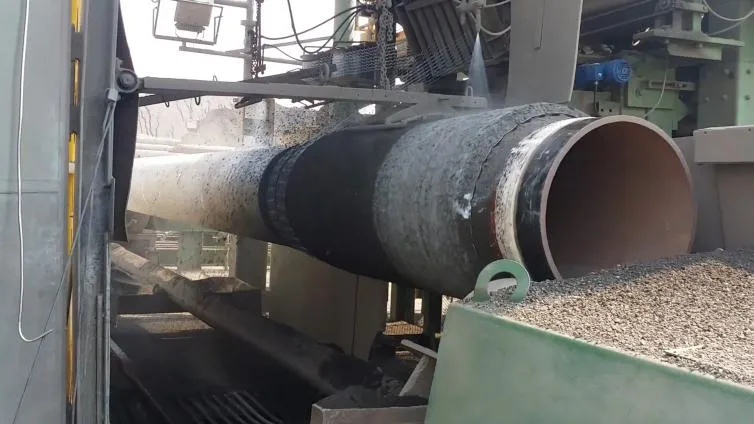- Industrial zone, South of Anping Town, Hengshui, Hebei, China.
- sales@hfpetromesh.com
- +86-18931809706
 Afrikaans
Afrikaans  Albanian
Albanian  Amharic
Amharic  Arabic
Arabic  Armenian
Armenian  Azerbaijani
Azerbaijani  Basque
Basque  Belarusian
Belarusian  Bengali
Bengali  Bosnian
Bosnian  Bulgarian
Bulgarian  Catalan
Catalan  Cebuano
Cebuano  Corsican
Corsican  Croatian
Croatian  Czech
Czech  Danish
Danish  Dutch
Dutch  English
English  Esperanto
Esperanto  Estonian
Estonian  Finnish
Finnish  French
French  Frisian
Frisian  Galician
Galician  Georgian
Georgian  German
German  Greek
Greek  Gujarati
Gujarati  Haitian Creole
Haitian Creole  hausa
hausa  hawaiian
hawaiian  Hebrew
Hebrew  Hindi
Hindi  Miao
Miao  Hungarian
Hungarian  Icelandic
Icelandic  igbo
igbo  Indonesian
Indonesian  irish
irish  Italian
Italian  Japanese
Japanese  Javanese
Javanese  Kannada
Kannada  kazakh
kazakh  Khmer
Khmer  Rwandese
Rwandese  Korean
Korean  Kurdish
Kurdish  Kyrgyz
Kyrgyz  Lao
Lao  Latin
Latin  Latvian
Latvian  Lithuanian
Lithuanian  Luxembourgish
Luxembourgish  Macedonian
Macedonian  Malgashi
Malgashi  Malay
Malay  Malayalam
Malayalam  Maltese
Maltese  Maori
Maori  Marathi
Marathi  Mongolian
Mongolian  Myanmar
Myanmar  Nepali
Nepali  Norwegian
Norwegian  Norwegian
Norwegian  Occitan
Occitan  Pashto
Pashto  Persian
Persian  Polish
Polish  Portuguese
Portuguese  Punjabi
Punjabi  Romanian
Romanian  Russian
Russian  Samoan
Samoan  Scottish Gaelic
Scottish Gaelic  Serbian
Serbian  Sesotho
Sesotho  Shona
Shona  Sindhi
Sindhi  Sinhala
Sinhala  Slovak
Slovak  Slovenian
Slovenian  Somali
Somali  Spanish
Spanish  Sundanese
Sundanese  Swahili
Swahili  Swedish
Swedish  Tagalog
Tagalog  Tajik
Tajik  Tamil
Tamil  Tatar
Tatar  Telugu
Telugu  Thai
Thai  Turkish
Turkish  Turkmen
Turkmen  Ukrainian
Ukrainian  Urdu
Urdu  Uighur
Uighur  Uzbek
Uzbek  Vietnamese
Vietnamese  Welsh
Welsh  Bantu
Bantu  Yiddish
Yiddish  Yoruba
Yoruba  Zulu
Zulu
- Afrikaans
- Albanian
- Amharic
- Arabic
- Armenian
- Azerbaijani
- Basque
- Belarusian
- Bengali
- Bosnian
- Bulgarian
- Catalan
- Cebuano
- Corsican
- Croatian
- Czech
- Danish
- Dutch
- English
- Esperanto
- Estonian
- Finnish
- French
- Frisian
- Galician
- Georgian
- German
- Greek
- Gujarati
- Haitian Creole
- hausa
- hawaiian
- Hebrew
- Hindi
- Miao
- Hungarian
- Icelandic
- igbo
- Indonesian
- irish
- Italian
- Japanese
- Javanese
- Kannada
- kazakh
- Khmer
- Rwandese
- Korean
- Kurdish
- Kyrgyz
- Lao
- Latin
- Latvian
- Lithuanian
- Luxembourgish
- Macedonian
- Malgashi
- Malay
- Malayalam
- Maltese
- Maori
- Marathi
- Mongolian
- Myanmar
- Nepali
- Norwegian
- Norwegian
- Occitan
- Pashto
- Persian
- Polish
- Portuguese
- Punjabi
- Romanian
- Russian
- Samoan
- Scottish Gaelic
- Serbian
- Sesotho
- Shona
- Sindhi
- Sinhala
- Slovak
- Slovenian
- Somali
- Spanish
- Sundanese
- Swahili
- Swedish
- Tagalog
- Tajik
- Tamil
- Tatar
- Telugu
- Thai
- Turkish
- Turkmen
- Ukrainian
- Urdu
- Uighur
- Uzbek
- Vietnamese
- Welsh
- Bantu
- Yiddish
- Yoruba
- Zulu
platform grating
Understanding Platform Grating An Essential Component in Modern Infrastructure
Platform grating serves as a vital component across various industries, particularly in construction, manufacturing, and infrastructure projects. Its design and function are integral to enhancing safety, functionality, and accessibility in environments where traditional flooring may fall short. This article delves into the significance of platform grating, its types, and its applications.
At its core, platform grating refers to the grid-like material often made from metal, fiberglass, or plastic that creates a walking surface in industrial settings, commercial buildings, and outdoor platforms. The primary role of grating is to provide a sturdy, slip-resistant surface that permits both fluid drainage and ventilation while allowing light to penetrate to the levels below, which is especially essential in environments like factories or processing plants.
One of the most common materials used for platform grating is steel, celebrated for its strength and durability
. Steel gratings are typically hot-dipped galvanized to prevent corrosion, making them suitable for use in harsh environments. On the other hand, fiberglass reinforced plastic (FRP) grating is increasingly popular due to its lightweight properties and resistance to chemicals and moisture. FRP is especially useful in settings such as wastewater treatment plants, where exposure to corrosive substances is a concern.platform grating

Various types of platform grating exist, including welded, swaged, and pressed designs. Welded gratings are constructed by joining bars at right angles, providing exceptional strength, while swaged gratings involve a series of bars that are swaged together, creating a lightweight yet strong option. Pressed grating, on the other hand, utilizes a pressing technique to produce a flat surface, often preferred for specific aesthetic applications.
The versatility of platform grating makes it suitable for numerous applications. It is commonly found in walkways, stairs, and platforms in industrial plants, where it facilitates safe movement for workers while allowing for drainage and airflow. Additionally, platform grating is used in a host of other settings, from pedestrian bridges to amusement park rides, highlighting its adaptability and relevance across various sectors.
Safety is paramount in any industrial or commercial application, and the use of platform grating significantly contributes to creating safer working environments. The slip-resistant surface helps prevent accidents, while its open design minimizes the risk of water pooling, further reducing slip hazards. This focus on safety, coupled with the material's durability and ease of installation, underscores the importance of platform grating in contemporary infrastructure.
In conclusion, platform grating is more than just a functional component; it enhances safety, efficiency, and accessibility across a multitude of industries. As technology and materials continue to evolve, the role of platform grating in modern infrastructure will only grow, solidifying its importance in creating safe and durable environments.
-
Welded Steel Bar Grating: The Rugged Industrial Flooring Solution Built for Load and LongevityNewsJun.24,2025
-
Steel Walkway Grating: Reliable, Resilient, and Built for Every StepNewsJun.24,2025
-
Shale Shaker Screen for Sale: Optimize Drilling Efficiency with Precision Screening PowerNewsJun.24,2025
-
Shaker Screen for Sale: Elevate Your Drilling Efficiency with Durable Separation SolutionsNewsJun.24,2025
-
Press Locked Steel Grating: Industrial Strength with Precision Fit for Heavy-Duty ApplicationsNewsJun.24,2025
-
Perimeter Safety Netting: The Critical Safety Upgrade for Every HelipadNewsJun.24,2025